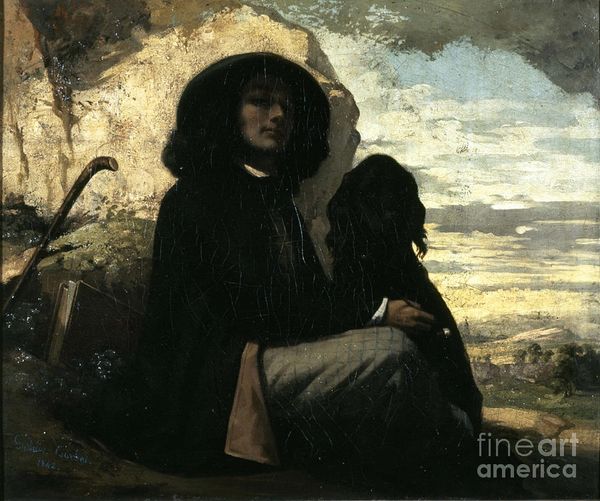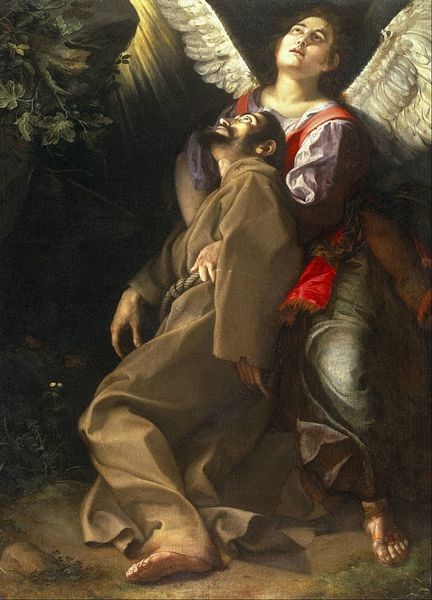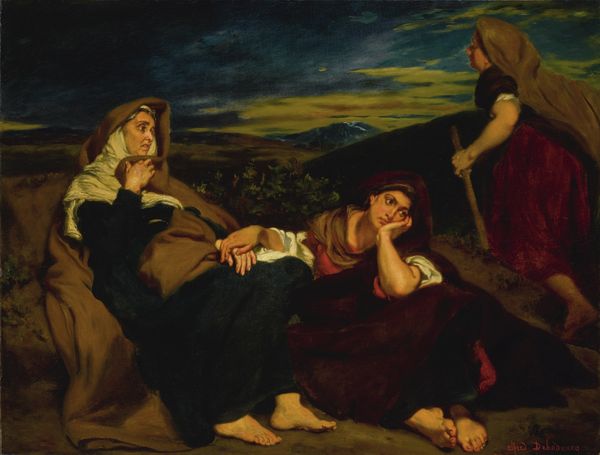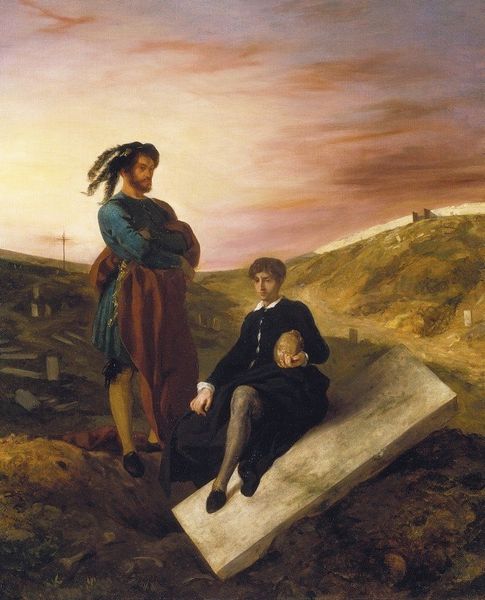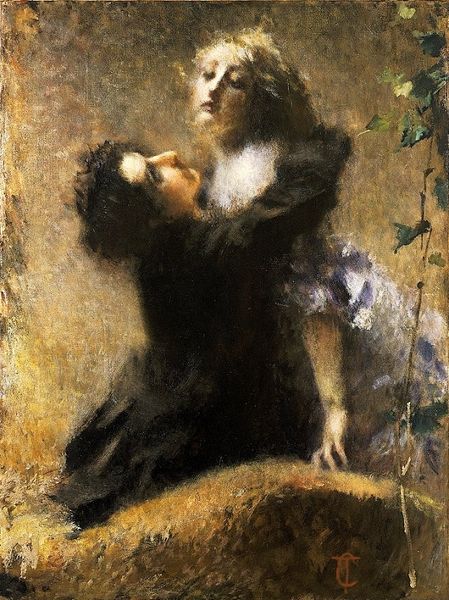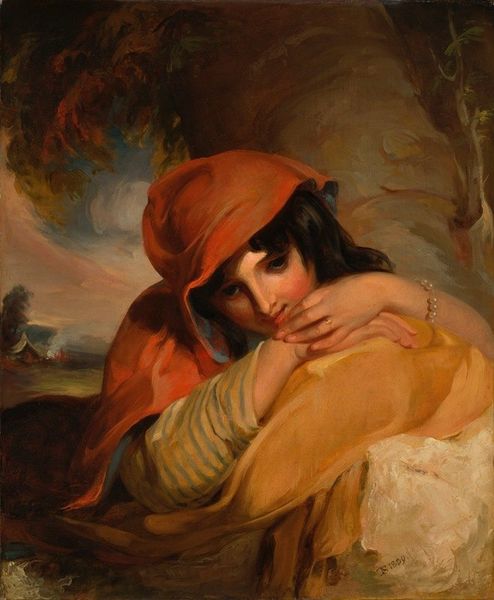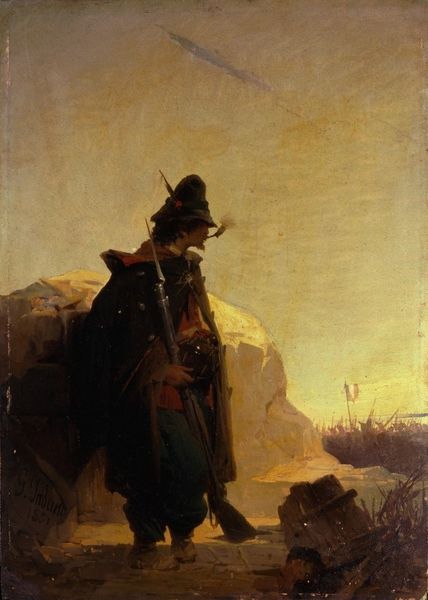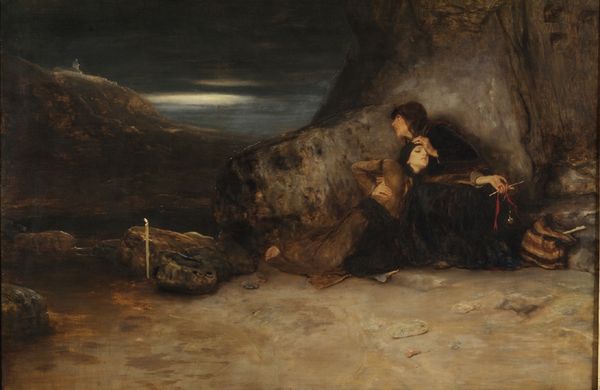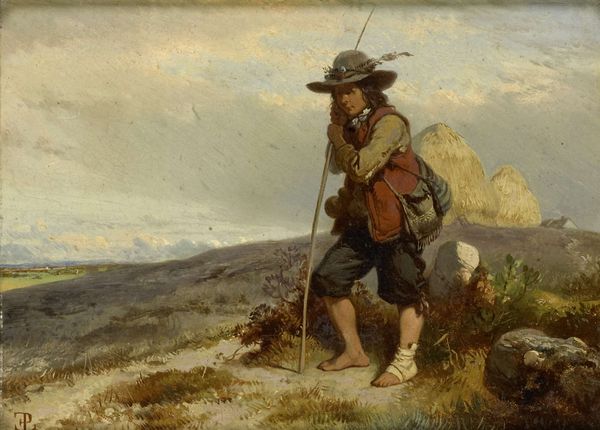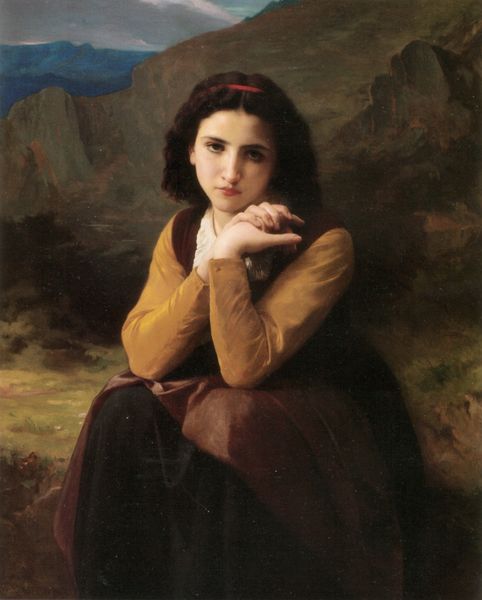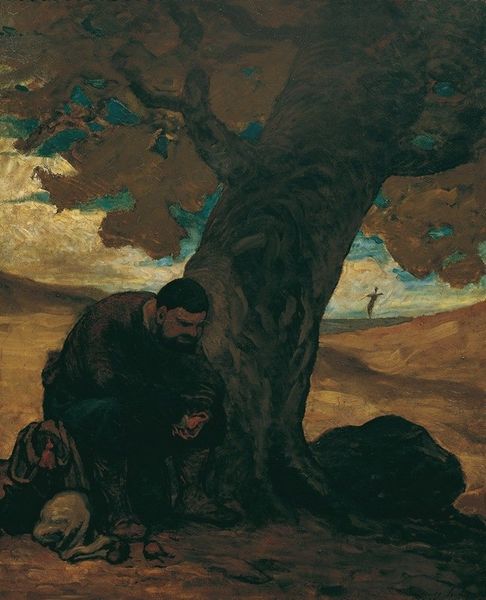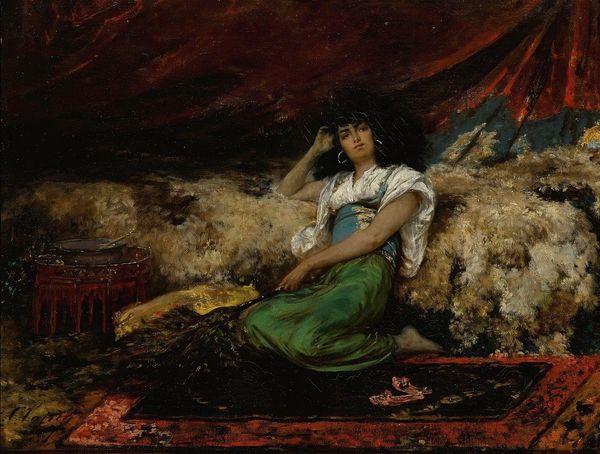
painting, oil-paint
#
portrait
#
figurative
#
self-portrait
#
painting
#
oil-paint
#
landscape
#
figuration
#
romanticism
#
realism
Copyright: Public Domain: Artvee
Curator: Gustave Courbet painted this arresting self-portrait, known as "Courbet with Black Dog," sometime between 1842 and 1844. What's your initial reaction? Editor: It’s…brooding. And layered. I’m struck by the impasto; I want to know how the paint was built up to create this melancholic but romantic scene. Look at the crackling—a history etched into the material itself! Curator: Indeed. Beyond the textural interest, the work operates as a tableau of sorts. The black dog becomes a symbol – of loyalty, certainly, but also perhaps a shadow self, mirroring the artist's own contemplative mood. Editor: Let's not overlook the landscape. Courbet isn’t just posing; he’s grounding himself in a specific place, engaging with his surroundings. The earthy tones, contrasted with his crisp linen, suggest his roots, his connection to labor, and rural life, maybe. Curator: Precisely. The landscape behind him acts as an indicator of the natural world's influence, contrasting his Romantic attire with the rugged realism of his surroundings. Consider how this echoes the Romantic notion of the artist as a solitary figure, communing with nature but separate from society. The dog is his companion, not a social peer. Editor: It makes me think about Courbet's revolutionary approach to painting. It's like he’s forging a new kind of artistic identity here—one deeply embedded in his material world but not denying sentiment or narrative. The clothing he chose, for instance, shows his approach to presentation of self. Curator: I think this "new" identity is interesting. It has connections to archetypes and other artists before him in its costuming and portrayal of nature and self. We shouldn't mistake it for being wholly unique; there is a clear visual vocabulary employed here. Editor: But by grounding it in such materiality, his technique allows him to challenge, through the way the paint sits on the canvas, some notions of previous masterworks. His visual vocab, you say, but he makes that his own by getting his hands dirty in a new way. Curator: Food for thought! Considering all the layers within the paint, within the image itself, Courbet gives us much to unpack. Editor: Absolutely, the art historical context, and the paint on the canvas itself provides rich material for a lot more exploration.
Comments
No comments
Be the first to comment and join the conversation on the ultimate creative platform.
